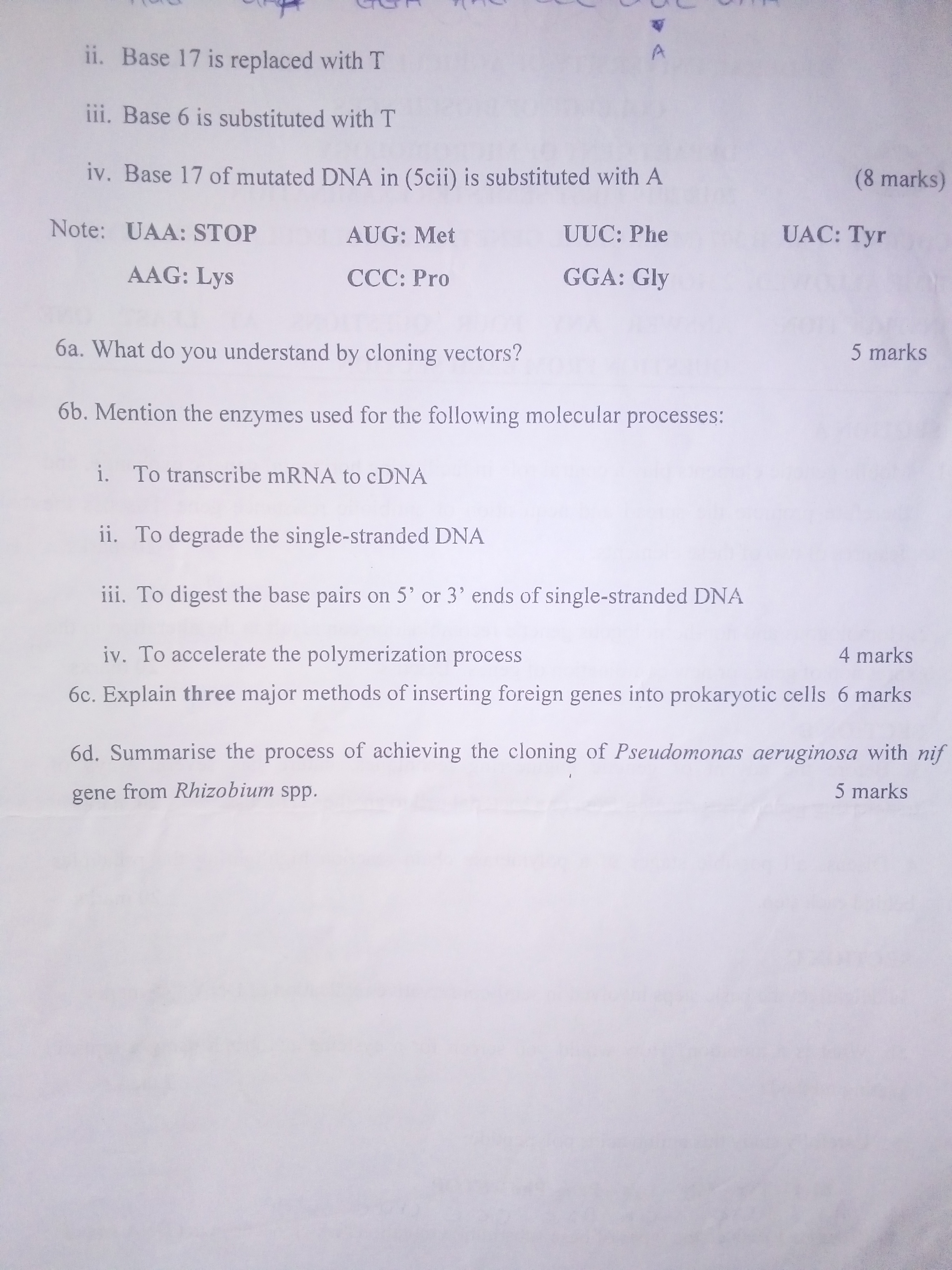

Question 1
Mobile genetic elements play a central role in facilitating horizontal genetic exchange and therefore promote the spread and acquisition of antibiotic resistance Gene. Discuss the features of two of these elements.
Question 2
Homologous and non-homologous genetic recombination can result in the alteration in the expression of genes or new combination of genes. Discuss
SECTION B
Question 3
Before the Advent of genetic engineering techniques, nature has several ways of transferring genetic information from one bacterial cell to another. Discuss.
Question 4
Discuss all possible stages of a polymerase chain reaction highlighting the principles behind each step.
SECTION C
Question 5
(a) Highlight the basic steps involved in semi-conservative replication of DNA
(b) what is a mutation?. How would you screen for a crysteine auxotroph using a replicaplating method?.
(c) Carefully study this amino acids polypeptide: Met-Tyr-Gly-Lys-Pro-Phe-STOP
With reasons, deduce the types of base substitution mutation which occurs in the DNA strand if:
(I) G is inserted between bases 20 and 21
(II) Base 17 is replicated with T
(III) Base 6 is substituted with T
(IV) Base 17 of mutation DNA in (5cii) is substituted with A
Note: UAA: STOP AUG: Met UUC: Phe UAC: Tyr AAG: Lys CCC: Pro GGA: Gly
Question 6
(a) What do you understand by cloning vectors?
(b) Mention the enzymes used for the following molecular processes:
(I) To transcribe mRNA to cDNA
(II) To degrade the single-stranded DNA
(III) To digest the base pairs on 5' or 3' ends of single-stranded DNA
(IV) To accelerate the polymerization process.
(c) Explain three major methods on inserting foreign genes into prokaryotic cells
(d) Summarize the process of achieving the cloning of pseudomonas aeruginosa with nif Gene from rhizobium spp.
...